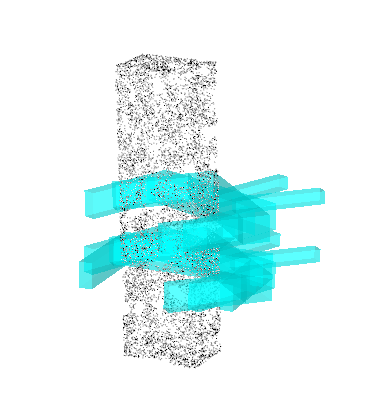Python binding for Grasp Pose Generator (pyGPG)
Grasp Pose Generator is a cpp package that creat grasp candidates for 3D point clouds. This package binding it with python.
Install in conda environment
conda install -c conda-forge pcl cmake boost
./build_pygpg.sh
- Note, if the conda failed to find the correct package to install, you can try installing mamba and using mamba to install the dependencies:
mamba install pcl cmake boost
Example:
import numpy as np
import pygpg
points = np.random.rand(3000, 3) # put your point cloud here, should be a nX3 numpy array, here is an example random array
num_samples = 10000
show_grasp = False
gripper_config_file = "PATH_TO_GRIPPER_CONFIG_FILE" # see gripper_params.cfg for an example
grasps = pygpg.generate_grasps(points, num_samples, show_grasp, gripper_config_file)
# grasps is a list of grasp objet, to construct a Transformation matrix from each grasp object, use:
pose_list = []
for grasp in grasps:
pose = np.eye(4)
pose[:3, 0] = grasp.get_grasp_approach()
pose[:3, 1] = grasp.get_grasp_binormal()
pose[:3, 2] = grasp.get_grasp_axis()
pose[:3, 3] = grasp.get_grasp_bottom()
pose_list.append(pose)
Demo with a simple box:
python example/example.py
Press R to see the result:

Citation
If you found pyGPG useful in your research, please consider citing:
@software{pygpg,
author = {Hongzhuo Liang},
title = {Python binding for Grasp Pose Generator (pyGPG)},
month = Aug,
year = 2021,
doi = {10.5281/zenodo.5247189},
url = {https://doi.org/10.5281/zenodo.5247189}
}